 In time honoured fashion the final lecture was delivered by Dr Alan Chapman. His subject this year was Edmond Halley, and as we soon learned Halley was not just an exceptional astronomer, his experiments, observations and research extended into many varied fields of science and professions, including fledgling scientific concepts and ideas.
In time honoured fashion the final lecture was delivered by Dr Alan Chapman. His subject this year was Edmond Halley, and as we soon learned Halley was not just an exceptional astronomer, his experiments, observations and research extended into many varied fields of science and professions, including fledgling scientific concepts and ideas.
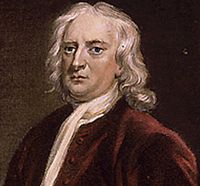 Halley was born in Shoreditch on the 8th November 1656. His father, Edmond Halley Sr. came from a Derbyshire family and was a wealthy soap-maker in London. Apart from the soap business, the Halley’s had plenty of properties in London. Even though, they lost some of their assets during the 'Great Fire of London' in 1666, it hardly affected their financial status; as Alan stated; ‘they were quite well off’.
Halley was born in Shoreditch on the 8th November 1656. His father, Edmond Halley Sr. came from a Derbyshire family and was a wealthy soap-maker in London. Apart from the soap business, the Halley’s had plenty of properties in London. Even though, they lost some of their assets during the 'Great Fire of London' in 1666, it hardly affected their financial status; as Alan stated; ‘they were quite well off’.
As a child Halley was very interested in mathematics and received private tuitions at home till he was admitted to St. Pauls School where he excelled in everything he did and became the captain of the school at the age of just 15. His father had already kitted out Edmond with all the necessary astronomical equipment required and in 1673 Halley went to Queens College;Oxford and whilst an undergraduate, he published papers on the Solar System and sunspots. However, he left the college in 1675 without completing his degree and started working for John Flamsteed who was the ‘Astronomer Royal’ at the Greenwich Observatory. Among other things, Halley had the job of assigning what is now called Flamsteed numbers to stars. ‘Halley was starting to make a name for himself’... [Read more about Astromeet Lecture Write-up: ‘Edmond Halley: astronomer, geophysicist and sea captain’ (Dr Alan Chapman)]

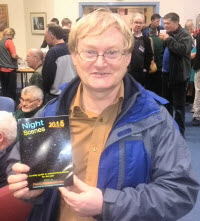 We caught up with Paul Money at Astromeet, and now have in our possession 20 copies of Night Scenes 2015... and it’s fair to say there’s quite a lot to look forward to next year.
We caught up with Paul Money at Astromeet, and now have in our possession 20 copies of Night Scenes 2015... and it’s fair to say there’s quite a lot to look forward to next year. You have the snazzy new-style newsletter; and now here comes ther reminder to WDAS Members about subscriptions for 2015, which are now due for renewal and will be held at the current inflation-busting levels as last year.
You have the snazzy new-style newsletter; and now here comes ther reminder to WDAS Members about subscriptions for 2015, which are now due for renewal and will be held at the current inflation-busting levels as last year. 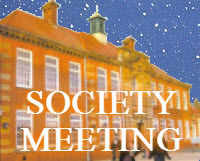 Don't forget the December 2014 WDAS meeting.
Don't forget the December 2014 WDAS meeting. Mark gives us an in-depth look at hot star cluster The Pleiades
Mark gives us an in-depth look at hot star cluster The Pleiades Andi gives an update of Astro-News, including the Rosetta/Philae mission so far - with 3D images and animations, no less! (3D glasses supplied)
Andi gives an update of Astro-News, including the Rosetta/Philae mission so far - with 3D images and animations, no less! (3D glasses supplied) As well as a tour of the Christmas sky, now, and then;
As well as a tour of the Christmas sky, now, and then;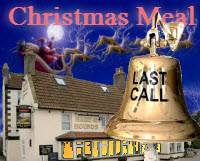
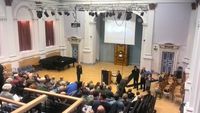 At one point it could have run to three cars, but in the end five WDAS members made the journey over to Leeds squeezing into just one - Andi's car - for Astromeet 2014.
At one point it could have run to three cars, but in the end five WDAS members made the journey over to Leeds squeezing into just one - Andi's car - for Astromeet 2014. 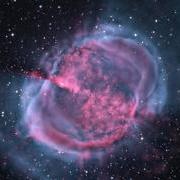
 In time honoured fashion the final lecture was delivered by Dr Alan Chapman. His subject this year was Edmond Halley, and as we soon learned Halley was not just an exceptional astronomer, his experiments, observations and research extended into many varied fields of science and professions, including fledgling scientific concepts and ideas.
In time honoured fashion the final lecture was delivered by Dr Alan Chapman. His subject this year was Edmond Halley, and as we soon learned Halley was not just an exceptional astronomer, his experiments, observations and research extended into many varied fields of science and professions, including fledgling scientific concepts and ideas. Halley was born in Shoreditch on the 8th November 1656. His father, Edmond Halley Sr. came from a Derbyshire family and was a wealthy soap-maker in London. Apart from the soap business, the Halley’s had plenty of properties in London. Even though, they lost some of their assets during the 'Great Fire of London' in 1666, it hardly affected their financial status; as Alan stated; ‘they were quite well off’.
Halley was born in Shoreditch on the 8th November 1656. His father, Edmond Halley Sr. came from a Derbyshire family and was a wealthy soap-maker in London. Apart from the soap business, the Halley’s had plenty of properties in London. Even though, they lost some of their assets during the 'Great Fire of London' in 1666, it hardly affected their financial status; as Alan stated; ‘they were quite well off’. 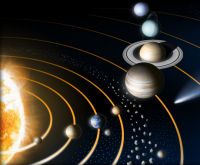 In this month's edition:
In this month's edition: